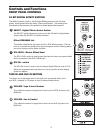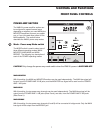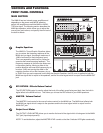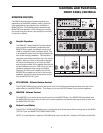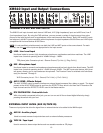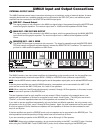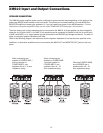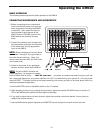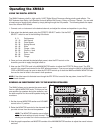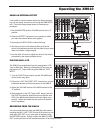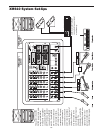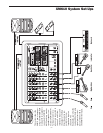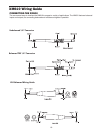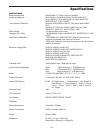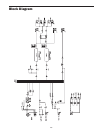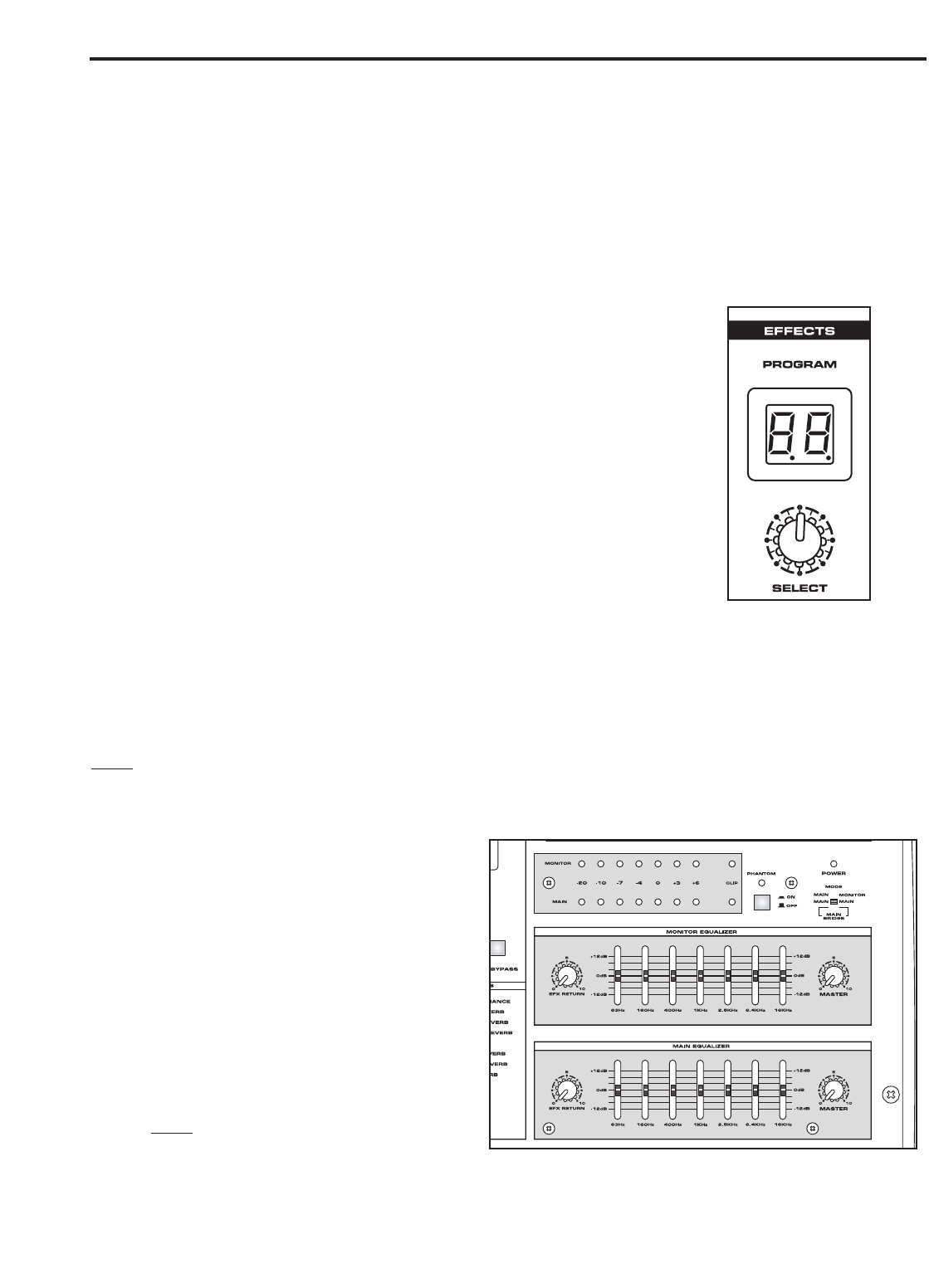
14
Operating the XM610
USING THE DIGITAL EFFECTS
The XM610 features a built-in, high quality, 24 BIT Digital Signal Processor offering studio grade effects. The
DSP features clean Delay, lush Reverbs and multi-effects like Chorus + Delay or Chorus + Reverb. You can add
a broad range of studio quality effects by simply dialing through the 100 presets. The following details the opera-
tion of the internal DSP effects:
1. Connect a mic or instrument to the desired channel, and adjust the volume and equalizer to your liking.
2. Now select the desired preset using the EFFECTS SELECT switch. Set the DSP
SELECT switch to one of the following 100 effects:
0 - 9 Performance
10 - 19 Hall Reverb
20 - 29 Plate Reverb
30 - 39 Spring Reverb
40 - 49 Echo
50 - 59 Flange + Verb
60 - 69 Chorus + Verb
70 - 79 Echo + Verb
80 - 89 Chorus
90 - 99 Flange
4. Once you have selected the desired effect preset, raise the EFX control on the
channels you wish to apply the digital effect to.
5. Now use the EFX RTN knob in the MAIN/MONITOR section to adjust the EFFECTS Return level. The EFX
control is the overall level control for the DSP effects processor. If you are not using the XM610 in MAIN/ MON-
ITOR or BRIDGE mode, be sure to raise the EFX RTN control up on both the MAIN and MAIN/ MONITOR sec-
tions so the level of effect is the same in both speakers.
NOTE
: If the effect sound is distorted even though the EFX RTN is turned all the way down, lower the EFX con-
trols of each channel.
SENDING AN INDEPENDENT MIX TO THE MONITOR SPEAKERS
The XM610 allows you to operate the power ampli-
fiers in a MAIN/ MONITOR mode. This lets you use
one amplifier for speakers facing the audience, and
the other amplifier for the monitor speaker facing the
musicians.
1. Set the channel MONITOR section and VOLUME
control to the "0" position.
2. Raise the MONITOR controls for the channels that
you wish to hear from the monitor speakers.
NOTE
: The MONITOR controls are not affect-
ed by the level settings of each channel. This
allows you to create a mix for the monitors that is independent of the MAIN mix.
3. Use the graphic equalizer and MASTER controls of the MAIN/MONITOR sections to adjust the overall volume
and tone.



